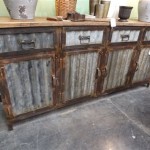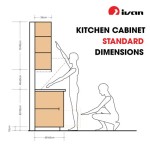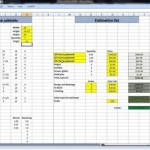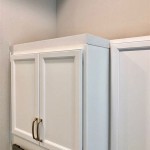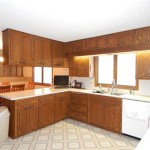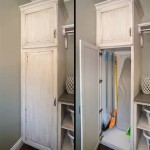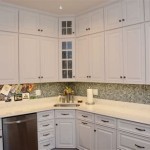Awesome Kitchen Cabinets: A Comprehensive Guide
The kitchen, often considered the heart of the home, relies heavily on its cabinetry for both functionality and aesthetic appeal. Awesome kitchen cabinets are not simply storage units; they are integral components that define the space's style, efficiency, and overall value. Choosing the right cabinets involves careful consideration of materials, design, hardware, and spatial constraints. This article delves into the various aspects of kitchen cabinetry, providing a comprehensive understanding of what constitutes “awesome” in this essential element of kitchen design.
Understanding Cabinet Construction and Materials
The foundation of any awesome kitchen cabinet lies in its construction and the materials used. Cabinet construction typically falls into two main categories: framed and frameless. Framed cabinets, the more traditional style, feature a face frame attached to the cabinet box, providing stability and a surface to which doors and drawers are mounted. Frameless cabinets, also known as European-style cabinets, lack a face frame, offering a cleaner, more contemporary look and increased accessibility to the interior space. The choice between framed and frameless depends largely on personal preference and the desired aesthetic.
Beyond the construction style, the materials used significantly impact the cabinet's durability, appearance, and cost. Common materials include:
Solid Wood: Solid wood is a premium choice, renowned for its beauty and longevity. Different wood species offer varying grain patterns and colors, such as oak, maple, cherry, and walnut. Solid wood cabinets can be stained or painted to achieve the desired finish. While beautiful and durable, solid wood is susceptible to changes in humidity and temperature, potentially leading to warping or cracking, especially in environments with fluctuating climate control.
Plywood: Plywood is an engineered wood product made from layers of wood veneers glued together. It offers excellent strength and stability, resisting warping and cracking better than solid wood. High-quality plywood is an excellent choice for cabinet boxes and shelves, providing a durable and reliable foundation.
Medium-Density Fiberboard (MDF): MDF is another engineered wood product made from wood fibers, resin, and wax, compressed under high pressure. MDF offers a smooth, consistent surface, making it ideal for painted cabinet doors and drawer fronts. It is also less expensive than solid wood and plywood. However, MDF is more susceptible to water damage than solid wood or plywood and should be properly sealed.
Particleboard: Particleboard, the least expensive option, is made from wood chips and resin. While it's economical, particleboard is less durable than other materials and prone to damage from moisture and impact. It is generally not recommended for high-use areas or for cabinets that will be exposed to humidity.
The selection of materials should be based on a balance of budget, aesthetics, and performance expectations. Cabinets crafted from high-quality materials will offer superior durability and longevity, ultimately proving to be a worthwhile investment.
Exploring Cabinet Styles and Designs
The style and design of kitchen cabinets are crucial for creating the desired aesthetic. Cabinet styles range from traditional to contemporary, with numerous variations in between. Understanding these styles allows homeowners to select cabinets that complement their overall kitchen design.
Traditional Cabinets: Traditional cabinets often feature raised panel doors, intricate detailing, and decorative hardware. They evoke a sense of elegance and formality, often incorporating elements such as crown molding, fluted columns, and antique finishes. Common wood choices for traditional cabinets include cherry, maple, and oak, stained in rich, warm tones.
Contemporary Cabinets: Contemporary cabinets are characterized by clean lines, minimalist design, and a focus on functionality. They often feature flat panel doors, sleek hardware, and a preference for light colors or bold, contrasting hues. Frameless construction is common in contemporary kitchens, providing a streamlined look. Materials such as laminate, metal, and glass are frequently used to achieve a modern aesthetic.
Transitional Cabinets: Transitional cabinets strike a balance between traditional and contemporary styles, offering a versatile and timeless look. They often incorporate elements from both styles, such as shaker-style doors with subtle detailing or a combination of painted and stained finishes. Transitional cabinets are popular for their adaptability and ability to complement a wide range of kitchen designs.
Shaker Cabinets: Shaker cabinets are a classic and versatile style, characterized by a simple five-piece flat panel door with clean lines. They are known for their understated elegance and ability to complement both traditional and contemporary kitchens. Shaker cabinets are typically made from wood, often painted in neutral colors such as white, gray, or beige.
Rustic Cabinets: Rustic cabinets embrace natural textures and materials, often featuring distressed finishes, visible wood grain, and reclaimed wood elements. They evoke a sense of warmth and authenticity, creating a cozy and inviting kitchen atmosphere. Common wood choices for rustic cabinets include knotty pine, hickory, and alder.
In addition to the overall style, cabinet design also involves considering the layout and configuration of the cabinets. Base cabinets, wall cabinets, and tall cabinets offer different storage solutions and contribute to the overall functionality of the kitchen. Incorporating features such as pull-out shelves, spice racks, and organizers can maximize storage space and improve efficiency. The layout should optimize workflow and accessibility, ensuring that frequently used items are within easy reach.
Selecting Hardware and Finishes
Hardware and finishes are the finishing touches that elevate awesome kitchen cabinets from functional storage to stylish design elements. The choice of hardware, including knobs, pulls, and hinges, can significantly impact the overall aesthetic of the cabinets. Finishes, such as paint, stain, and glaze, determine the color and texture of the cabinet surfaces.
Hardware: Cabinet hardware should complement the style of the cabinets and the overall kitchen design. Knobs and pulls come in a wide variety of shapes, sizes, and materials, including metal, wood, glass, and ceramic. Traditional kitchens often feature ornate knobs and pulls with antique finishes, while contemporary kitchens favor sleek, minimalist hardware with clean lines. The finish of the hardware should coordinate with other metal elements in the kitchen, such as faucets and light fixtures.
Hinges are another important aspect of cabinet hardware. Concealed hinges offer a clean, seamless look, while exposed hinges can add a decorative touch. Soft-close hinges are a popular upgrade, preventing doors from slamming shut and reducing noise. The quality of the hinges will impact the durability and longevity of the cabinets.
Finishes: The finish of kitchen cabinets determines their color, texture, and overall appearance. Paint is a popular choice for cabinets, offering a wide range of colors and finishes, from matte to glossy. Painted cabinets can be easily updated to reflect changing trends. Stain highlights the natural grain of the wood, providing a warm and inviting look. Stains are available in various shades, from light to dark, allowing homeowners to customize the color of their cabinets.
Glazes can be applied over paint or stain to add depth and dimension to the cabinet finish. Glazes are typically darker in color than the base finish and are applied to crevices and details to accentuate the cabinet's design. Distressed finishes create a weathered, antique look, adding character and charm to the cabinets. These finishes often involve techniques such as sanding, chipping, and applying multiple layers of paint or stain.
The selection of hardware and finishes should be carefully considered to ensure that they complement the style of the cabinets and the overall kitchen design. High-quality hardware and finishes will enhance the beauty and durability of the cabinets, creating a cohesive and visually appealing space. The choice of hardware and finishes also impacts the maintenance requirements of the cabinets. Durable finishes that resist scratches and stains will help keep the cabinets looking their best for years to come.

Discover 66 Stunning Kitchen Cabinet Ideas For A Stylish Makeover Interior Design Cabinets

9 Best Kitchen Cabinets Of 2024

Wood Kitchen Cabinets An Investment To Awesome Home Z Rustic Design Italian

Best Kitchen Cabinet Paint Colors 2024 Wow 1 Day Painting

9 Best Kitchen Cabinets Of 2024

The Best Kitchen Design Ideas For Your Home Christopher Scott Cabinetry

20 Awesome Kitchen Ideas Beautiful Designer Kitchens Houzewize

Discover 66 Stunning Kitchen Cabinet Ideas For A Stylish Makeover

These Are The Best Kitchen Cabinet Colors

How To Find The Best Kitchen Cabinets 2024 Guide Forbes Home
Related Posts

